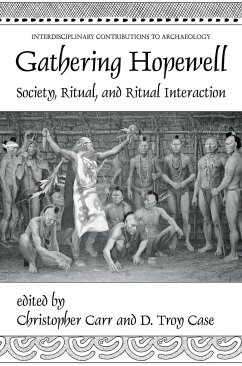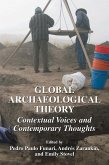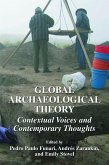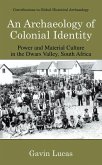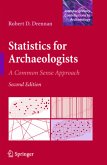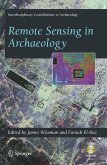Among the most socially and personally vocal archaeological remains on the North American continent are the massive and often complexly designed earthen architecture of Hopewellian peoples of two thousand years ago, their elaborately embellished works of art made of glistening metals and stones from faraway places, and their highly formalized mortuaries. In this book, twenty-one researchers in interwoven efforts immerse themselves and the reader in this vibrant archaeological record in order to richly reconstruct the societies, rituals, and ritual interactions of Hopewellian peoples.
By finding the faces, actions, and motivations of Hopewellian peoples as individuals who constructed knowable social roles, the authors explore, in a personalized and locally contextualized manner, the details of Hopewellian life: leadership, its sacred and secular power bases, recruitment, and formalization over time; systems of social ranking and prestige; animal-totemic clan organization, kinship structures, and sodalities; gender roles, prestige, work load, and health; community organization in its tri-scalar residential, symbolic, and demographic forms; intercommunity alliances and changes in their strategies and expanses over time; and interregional travels for power questing, pilgrimage, healing, tutelage, and acquiring ritual knowledge.
This book is useful to scholars, graduate students, and advanced undergraduates interested in the workings and development of social complexity at local and interregional scales, recent theoretical developments in the anthropology of the topics listed above, the prehistory of eastern North America, its history of intellectual development, and Native American ritual, symbolism, and belief.
By finding the faces, actions, and motivations of Hopewellian peoples as individuals who constructed knowable social roles, the authors explore, in a personalized and locally contextualized manner, the details of Hopewellian life: leadership, its sacred and secular power bases, recruitment, and formalization over time; systems of social ranking and prestige; animal-totemic clan organization, kinship structures, and sodalities; gender roles, prestige, work load, and health; community organization in its tri-scalar residential, symbolic, and demographic forms; intercommunity alliances and changes in their strategies and expanses over time; and interregional travels for power questing, pilgrimage, healing, tutelage, and acquiring ritual knowledge.
This book is useful to scholars, graduate students, and advanced undergraduates interested in the workings and development of social complexity at local and interregional scales, recent theoretical developments in the anthropology of the topics listed above, the prehistory of eastern North America, its history of intellectual development, and Native American ritual, symbolism, and belief.
From the Reviews
"Seldom does a small group of scholars and their research have the opportunity to remake an entire field of inquiry. Christopher Carr, Troy Case, and their colleagues and students have done so. Gathering Hopewell provides new and strong foundations for a truly social and cultural archaeology and offers solid direction for future work on the spectacular remains of prehistoric "Hopewell" groups of Eastern North America. This work offers an unmatched conjunction of social and cultural theory, great scholarly imagination, and unprecedented empirical evidence." (Christopher Peebles, Professor of Anthropology, Indiana University)
"Gathering Hopewell is, by any measure, an outstanding contribution to knowledge about one of the most important, but least understood, cultural developments in eastern North America. This authoritative, comprehensive, and provocative book will no doubt prove to be a much-welcomed watershed in Hopewell-related research." (George Milner, Professor of Anthropology, Pennsylvania State University)
"Gathering Hopewell is remarkable in its humanizing of Hopewellian archaeological records and synthesis of Hopewellian life. It represents a major advance in archaeological mortuary theory and analysis and their potential for understanding past societies." (Robet Mainfort, Professor of Anthropology, Arkansas Archaeological Survey)
"I applaud the contributors for producing an authoritative, clearly written, creatively edited, carefully researched, and logically argued work that will direct and stimulate debate among Hopewellian archaeologists specifically, and anthropological archaeologists generally. Few archaeologists are positioned to produce such a synthetic exposition; this work establishes Carr as the preeminent dean of Hopwellian studies. That the book speaks with a single voice is testimony to his efforts to fulfill a goal that all editors strive for, yet fewachieve. This well edited and tightly integrated collection of papers written in jargon-free prose makes broad contributions to archaeological theory and method as well as our understanding of the history and culture of ancient America. It will undoubtedly be recognized as a tour de force that serious Hopewellian scholars will confront and consult for years to come." (Southeastern Archaeology 25:1, Summer 2006)
"This volume is readily accessible, and there is no reason why it should not be on the shelf, and its general message in the heads, of anybody serious about North American prehistory. ... Gathering Hopewell is truly a monumental achievement, reflecting the vision and hard work of a great many scholars. The editors and contributors are a part of something special here, and deserve our thanks for showing us what archaeology can accomplish in bringing Hopewell to life. ... The writing is scholarly yet accessible, and while theoretically robust and as warranted appropriately scientific, it is at the same time infused with a broad humanistic perspective, providing many lessons and insights illustrating how mondern archaeology should be conducted." (American Antiquity, 71:3, 2006)
"This book is a treasure trove of raw data and inspired interpretation. It is overflowing with intensive studies of artefact, settlement, burial, and earthwork types, and the rich descriptions of these data convey the quality of the artefacts in unique ways. The meshing of ethnographic and archaeological data is unprecedented. Overall, this book will have a profound effect on the nature and direction of Hopewellian studies for years to come." (Antiquity 80:308, June 2006)
"This book is a monumental work from a seasoned scholar that should be a model for other archaeological studies. Despite containing over 700 pages of text and 21 contributors, it is still highly accessibly and coherent. It is also theoretically consistentand even though some readers may not agree with Carr's theory... one cannot help being impressed."
(Andrew Martin, Cambridge Archaeological Journal, 18:3)
"Seldom does a small group of scholars and their research have the opportunity to remake an entire field of inquiry. Christopher Carr, Troy Case, and their colleagues and students have done so. Gathering Hopewell provides new and strong foundations for a truly social and cultural archaeology and offers solid direction for future work on the spectacular remains of prehistoric "Hopewell" groups of Eastern North America. This work offers an unmatched conjunction of social and cultural theory, great scholarly imagination, and unprecedented empirical evidence." (Christopher Peebles, Professor of Anthropology, Indiana University)
"Gathering Hopewell is, by any measure, an outstanding contribution to knowledge about one of the most important, but least understood, cultural developments in eastern North America. This authoritative, comprehensive, and provocative book will no doubt prove to be a much-welcomed watershed in Hopewell-related research." (George Milner, Professor of Anthropology, Pennsylvania State University)
"Gathering Hopewell is remarkable in its humanizing of Hopewellian archaeological records and synthesis of Hopewellian life. It represents a major advance in archaeological mortuary theory and analysis and their potential for understanding past societies." (Robet Mainfort, Professor of Anthropology, Arkansas Archaeological Survey)
"I applaud the contributors for producing an authoritative, clearly written, creatively edited, carefully researched, and logically argued work that will direct and stimulate debate among Hopewellian archaeologists specifically, and anthropological archaeologists generally. Few archaeologists are positioned to produce such a synthetic exposition; this work establishes Carr as the preeminent dean of Hopwellian studies. That the book speaks with a single voice is testimony to his efforts to fulfill a goal that all editors strive for, yet fewachieve. This well edited and tightly integrated collection of papers written in jargon-free prose makes broad contributions to archaeological theory and method as well as our understanding of the history and culture of ancient America. It will undoubtedly be recognized as a tour de force that serious Hopewellian scholars will confront and consult for years to come." (Southeastern Archaeology 25:1, Summer 2006)
"This volume is readily accessible, and there is no reason why it should not be on the shelf, and its general message in the heads, of anybody serious about North American prehistory. ... Gathering Hopewell is truly a monumental achievement, reflecting the vision and hard work of a great many scholars. The editors and contributors are a part of something special here, and deserve our thanks for showing us what archaeology can accomplish in bringing Hopewell to life. ... The writing is scholarly yet accessible, and while theoretically robust and as warranted appropriately scientific, it is at the same time infused with a broad humanistic perspective, providing many lessons and insights illustrating how mondern archaeology should be conducted." (American Antiquity, 71:3, 2006)
"This book is a treasure trove of raw data and inspired interpretation. It is overflowing with intensive studies of artefact, settlement, burial, and earthwork types, and the rich descriptions of these data convey the quality of the artefacts in unique ways. The meshing of ethnographic and archaeological data is unprecedented. Overall, this book will have a profound effect on the nature and direction of Hopewellian studies for years to come." (Antiquity 80:308, June 2006)
"This book is a monumental work from a seasoned scholar that should be a model for other archaeological studies. Despite containing over 700 pages of text and 21 contributors, it is still highly accessibly and coherent. It is also theoretically consistentand even though some readers may not agree with Carr's theory... one cannot help being impressed."
(Andrew Martin, Cambridge Archaeological Journal, 18:3)

